

Landfill gas (LFG) fired leachate evaporation is a novel technology attracting the attention of landfill owners because it can offer an operational win-win. The technology uses a readily available resource at landfills, LFG, to remove liquid from landfill leachate via evaporation, thus abating this environmental liability onsite, often at a lower cost than conventional leachate treatment options. In addition, combusting LFG to evaporate leachate converts methane, a highly potent greenhouse gas, to carbon dioxide, which reduces overall greenhouse gas emissions.
Landfill owners seeking to implement LFG-fired leachate evaporation must undergo the necessary air permitting and follow applicable emissions regulations. In this regard, air permitting and regulatory requirements for the combustion-related component of LFG-fired evaporation are similar to those applicable to conventional LFG flares. However, in addition, there are permitting considerations for evaporation-related emissions too. As this is uncharted territory for regulators, it is important to work closely with your agency to ensure you or your consultant is properly addressing these technology-specific requirements.
Read Landfill Leachate, Just ‘Evaporate’ the Problem …or Permitting Issues for Using Landfill Gas to Reduce Leachate Volume by David Greene, PE, SCS Engineers. Published by em, the Magazine for Environmental Managers, A&WMA, issue June 2019.
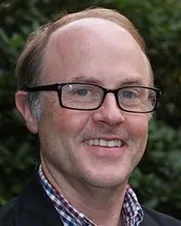
About the Author: David Greene is a project manager at SCS Engineers with a multiplicity of solid waste related environmental engineering experience, including air permitting, landfill gas, financial analysis, due diligence efforts, regulatory development and analysis, compliance planning, greenhouse gas monitoring, emission inventory including emission factor development, SPCC and SWPPP development. Mr. Greene also consults internationally in Southeast Asia focusing on the areas of planning and implementing training and evaluating the feasibility of LFG energy and renewable energy projects at solid waste disposal sites. He is a Professional Engineer in North and South Carolina.
The EPA Resource Conservation and Recovery Act (RCRA) requires landfill operators to maintain post-closure care for 30 years, though states will adjust the term according to when they determine ending this care will not threaten human health or the environment. Industry stakeholders say it’s not enough guidance because it does not provide how states should assess for impact on human health or the environment, nor how to determine when to transition from active post-closure care to custodial care. Regulators tend to default to an extension of terms. Again data collection plays a significant role in determining the post-closure care term.
“The whole purpose of the post-closure care term is to provide enough time for landfills to become stable. One way to assess is by determining if functional stability has been achieved, which entails looking at performance metrics like leachate management, settlement, landfill gas control, and groundwater monitoring,” says Bob Gardner, of SCS Engineers.
Looking at these metrics, once it’s determined that functional stability has been achieved, these active systems may be able to be turned off, with only passive controls like cover remaining in place.
Monitoring may be done less frequently or not at all. “EPA acknowledges that back in the 1980s, it did not know how systems, primarily liner systems, would perform under new Subtitle D rules. But based on monitoring of these systems over the past 25 years, we know that they perform well to prevent migration of contaminants to groundwater,” says Gardner.
Read the Waste360 article Stakeholders Call for More Certain Landfill Post-closure Care Terms
Investigate why over 600 landfills use SCS eTools® to track, report, and store important data.
Comments were submitted to the EPA from NWRA/ SWANA regarding the EPA’s Advance Notice of Public Rule Making (ANPRM) for revisions to Subtitle D, and in particular potential revisions regarding the bulk liquids addition. Subtitle D prohibits bulk liquids additions with the exception of leachate recirculation, and the RD&D permit process allows bulk liquids. Bob Gardner of SCS Engineers was involved in the development of the joint NWRA/SWANA comment letter.
EPA has indicated that they are considering adding a “wet landfill” definition to Subtitle D; however, the Industry strongly advised against doing so. The letter addresses this issue and the reasons for recommending against a separate “wet landfill” definition.
Industry Association’s Comments
The Office of Information and Regulatory Affairs announced the release of the Agenda of Regulatory and Deregulatory Actions. The Agenda reports on the actions administrative agencies plan to issue in the near and long term. Of note:
The EPA published an Advance Notice of Proposed Rulemaking (ANPRM) regarding possible revisions to the Resource Conservation and Recovery Act (RCRA) Subtitle D part 258 regulations for municipal solid waste (MSW) landfills that may provide regulatory flexibility to encourage accelerated waste decomposition in the presence of water. In light of advances in landfill technology, the EPA is considering whether to revise part 258 to create new national standards for the management of liquids in “wet” landfills and bioreactor landfills, including the possibility of removing the prohibition on the addition of bulk liquids, to foster accelerated waste decomposition. Through the ANPRM, the EPA requested information and data on the performance of bioreactor landfills and wet landfills, including information on appropriate liquids management. In addition, the EPA requested comments on whether new national standards for bioreactor landfills and wet landfills are appropriate, and if so, what regulatory changes the EPA should consider in developing any proposal.
This proposal address the agency’s residual risk and technology review (RTR) of the National Emission Standards for Hazardous Air Pollutants (NESHAP) for Municipal Solid Waste (MSW) Landfills. The MSW Landfills NESHAP, subpart AAAA, was promulgated pursuant to section 112(d) of the Clean Air Act (CAA) on January 16, 2003. The NESHAP established emission limitations based on maximum achievable control technology (MACT) for controlling emissions of hazardous air pollutants (HAP) and helped implement the Urban Air Toxics Strategy developed under section 112(k) of the CAA. The HAP emitted by MSW landfills includes, but are not limited to, vinyl chloride, ethylbenzene, toluene, and benzene. This action implements the residual risk review requirements of CAA section 112(f)(2) and the technology review requirements of CAA section 112(d)(6). The statute directs the EPA to promulgate emission standards under CAA 112(f)(2) if such standards are required to provide an ample margin of safety to protect public health or to prevent, taking relevant factors into account, an adverse environmental effect. Any such standards are to be promulgated within 8 years after the promulgation of MACT standards under CAA section 112(d). CAA section 112(d)(6) requires the EPA to review and revise the MACT standards as necessary, taking into account developments in practices, processes and control technologies, no less often than every 8 years. Pursuant to a court order, the EPA is obligated to complete the final action by March 13, 2020. In consideration of this deadline, which also applies to 19 other RTR source categories, we established an internal schedule for this RTR to be proposed and finalized prior to the consent decree deadline. The EPA currently plans to complete this action by July 2019.
The EPA finalized the Emission Guidelines and Compliance Times for Municipal Solid Waste Landfills on August 29, 2016 (81 FR 59276). The requirements for state and federal plans implementing the Municipal Solid Waste (MSW) Landfills Emission Guidelines are specified in subpart B – 40 CFR 60.20-60 (referred to as the implementing regulations), which is cross-referenced in the emission guidelines issued by the Agency.
In August 2018, the EPA proposed changes to the implementing regulations governing emission guidelines under a new 40 CFR part 60, subpart Ba. This action aligns the regulatory text in the MSW Landfills Emission Guidelines with a cross-reference to the new subpart Ba for the timing requirements of state and federal plans.
Wendell, a Senior Project Professional in the SCS Engineers Sacramento office became interested in photography 35 years ago. He had broken his ankle and needed something to do because he felt grumpy not being able to play tennis. His tennis partner loaned him a camera, some film, and his dark room.
Wendell was hooked.
Wendell’s beautiful photos capture the reason we work with our clients to protect our environment. See a few pieces of his organic work, and look for more soon.
Mr. Minshew has over 30 years of engineering experience. He specializes in civil engineering services in the planning, design, permitting, and construction management of solid and hazardous waste facilities. He is a licensed Professional Engineer in California and Nevada.
Thank you for sharing, Wendell.
The International Solid Waste Association (ISWA) has determined that uncontrolled dumpsites hold 40% of the world’s waste and that the world’s 50 biggest dumpsites (identified through a voluntarily survey conducted by D-Waste in 2014) directly affect the daily lives of 64 million people, equivalent to the population of France.
The ISWA reports (2014, 2015a, 2015b, 2016) showcase how eliminating dumpsites is an urgent issue, affecting local, regional, and even global health and the environment. Important findings indicate that 38 out of the 50 biggest dumpsites directly impact marine and coastal areas and can become sources of disease outbreaks and the release of wastes (particularly durable plastics) to waterways and the oceans.
Studies suggest that non-engineered dumps and uncontrolled landfills are the third largest source of global anthropogenic methane, a greenhouse gas about 25 times more potent than carbon dioxide (CO2), accelerating climate change. It is estimated that open dumps emit the equivalent of more than 20 million metric tonnes [tons] of CO2 per year. Without any action, it is projected that existing open dumps will account for 10% of global greenhouse gas emissions by 2025.
If open dumps instead were replaced by engineered landfills with state-of-the-art landfill gas collection and destruction systems, it would be like removing five million cars from the planet.
In 2018, ISWA’s Working Group on Landfill (WGL) developed a Task Force on Closing Dumpsites (TFCD) and presented its dump closure initiative as one of its flagship projects for the future at the United Nations (UN) Conference on Housing and Sustainable Urban Development – Habitat III.
Please read this important ISWA Editorial by James Law and David Ross on this significant issue. The editorial contains a link to the full article available on open access through ISWA’s Journal, Waste Management & Research here.
SCS Engineers brochure – Closing Dumpsites is also available.
For many oil and gas waste processing and disposal facilities, and water midstream facilities, groundwater monitoring is mandatory. The ongoing quarterly monitoring well sampling is a long-term operating expense that presents opportunities for cost reduction by employing new sampling technologies that reduce labor time and cost.
Conventional monitoring well sampling traditionally requires bulky and expensive pumps and support equipment. Time-consuming to use, these also require specialized training and are prone to mechanical failure in oil basin extreme weather conditions. Straightforward, lower-tech methods are available that can substantially lower field costs; in some cases, by up to 50 percent.
Best Practices
If your sampling results indicate potential problems, we recommend bringing in groundwater analytic expertise; this is where you want to concentrate your environmental compliance resources.
It is essential to conduct one or more background sampling events before a facility opening to interpret sampling results that may reveal facility issues. At SCS, we’ve seen many documented cases of facilities that unknowingly were operating over groundwater already contaminated by other nearby facilities or tainted by naturally occurring petroleum in the subsurface.
Another cost-reduction best practice is the application of statistical analysis to the lab results. While not always required by regulators, there are well-proven analytical tools that can answer questions about the source of apparent anomalies in the data. Ongoing application of these tools—even if only done internally—can reveal problems early and solve others before they become a liability.
O&G Environmental Services and Permitting
Jim Lawrence, SCS Engineers professional hydrogeologistAbout the Author: James Lawrence of SCS Engineers is a hydrogeologist with 25 years of experience in all aspects of the distribution and movement of groundwater in the southwestern and central portions of the U.S. Jim leads the groundwater monitoring program for SCS in the Permian Basin area. He works to resolve problems that arise with groundwater monitoring, including assessment monitoring, corrective action, landfill and natural gases, and alternate source demonstration issues.
His responsibilities include supervising the sampling, data reporting, and statistical analysis. His job experience includes extensive permitting-related hydrogeological characterizations, the design and implementation of groundwater monitoring systems, assessing groundwater geochemistry, soil and groundwater assessment investigations, risk reduction rules, groundwater modeling, design and implementation of numerous large dewatering systems, design of water supply wells, managing waste injection wells, managing CERCLA and RCRA investigations, and waste analysis/characterization programs.
Mr. Lefebvre, a Professional Engineer in nine states recently joined the SCS Environmental Services team. He brings over three decades of experience as an environmental engineer and consultant specializing in soil and water remediation services for both government and business sectors.
Mr. Lefebvre manages remedial action plans, multi-media contamination assessments, industrial wastewater treatability studies and treatment system designs for SCS’s clients. He serves as an expert witness as well. He has designed and managed industrial wastewater treatment systems for the pharmaceutical industry; successfully remediated groundwater at petroleum Superfund sites; restored soil and groundwater at several RCRA sites; and was the Engineer of Record for a South Florida Water Management District (SFWMD) project to protect the Everglades National Park.
Welcome to SCS!
Learn more about SCS Engineers work:
More than 500,000 people call Volusia County home. Situated on the east coast of Central Florida, the county has 47 miles of Atlantic Ocean beaches and beachfront cities including Daytona Beach, Ormond Beach and New Smyrna Beach. Volusia County has an abundance of natural beauty and some of the most beautiful parks in the United States.
Green Volusia is the county’s long-term initiative designed to provide residents and visitors with information about green, or sustainable, practices to reduce the impact on the environment. Green Volusia provides information about environmentally responsible practices that benefit the whole community as well as encouraging stewardship and conservation of our natural resources.
Despite the best green practices, it came time to expand the county’s landfill. The City Council approved a contract for Professional Construction Quality Assurance (CQA) and Engineering Services with SCS Engineers. SCS is an award-winning environmental consulting, engineering and construction company known for sustainable environmental solutions. The Council selected SCS for their in house expertise in MSW cell construction, and successful record of delivering the highest quality environmental engineering services.
An environmental insurance claim is simply the response and mitigation of an environmental issue or event paid for by an environmental insurance policy. Similar to an auto or home insurance claim, a company or individual purchases this type of policy to protect them in case a matter arises about their facility, operations, or property resulting in a regulatory requirement for investigation and remediation; forming the basis for a submitted claim. Such responses cost money, often a lot of it, and the environmental insurance policy is there to pay for the costs associated with the investigation and remediation of any environmental issues.
Any environmental issue can result in an environmental claim, so it is essential that you have the right policy in place to cover a particular claim. Typical issues or events include:
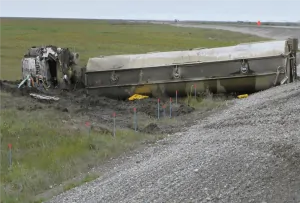
Insurance clients submit notice to the insurance company that an environmental issue occurred or was discovered which requires investigation and corrective action. The onus is on the client to provide sufficient information to substantiate a claim submittal. The insurance company reviews this information in their evaluation of coverage for the issue under the policy.
When a new claim is submitted to the insurance company, the client must provide information that substantiates that an issue exists and that further investigation and corrective action is required. Often their substantiation consists of the initial technical details about the nature and extent of the environmental problem. Claims analysts generally have a strong legal background but may lack technical environmental expertise; this is when insurance support services become valuable. The following paragraphs summarize each step in the process and how SCS insurance support assists claims analysts through the process.
Once the insurance company receives a notice of claim, they determine whether the client’s policy provides coverage for the specific issue or event that constitutes the claim. A claims analyst evaluates the specifics of the claim to determine if the associated details and circumstances fall within the specifics of the client’s policy. If so, coverage is usually accepted. If not, coverage is generally denied.
SCS’s role is to provide an evaluation of the technical aspects of the claim so that the claims analyst can take the distilled facts and compare them against the specifics of the policy; often called a “Source and Timing” evaluation. Take, for example, an underground storage tank (UST) release at a gasoline station. In this example, free product (gasoline) is observed in an on-site monitoring well where no free product has previously or recently been identified.
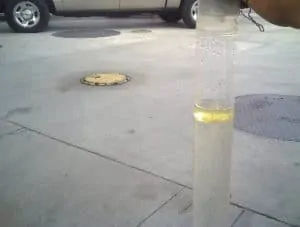
The station owner or their environmental consultant reports the apparent new release to the regulator, and a confirmed discharge is recorded. The property owner than notifies the insurance company of a gasoline release to the environment.
As part of the “Source and Timing” evaluation, SCS’s insurance support reviews tank system leak detection and inventory records, tank system tightness testing records, previous groundwater monitoring data, reports of any earlier releases at the facility, and any other information or data about the facility and the subject release. The goal is to identify:
If enough information is available to make these determinations, then the claims analyst compares the SCS report to the coverage specifics and exclusions included in the policy; determining if the event is covered. The claims analyst will usually try to make a coverage determination on their own if the facts are relatively straightforward, but often that is not the case, and the assistance of insurance support services is necessary.
This process can be straightforward, such as in the case of a tanker truck rollover or industrial facility chemical spill, but is often more complicated when insufficient information is available to make a source and timing determination. In the latter case, the claims analyst issues a Reservation of Rights letter, stating that the insurer is not accepting or denying coverage at this time as the circumstances of the claim are still under evaluation and investigation.
Claims can be denied if the incident occurs before or after the policy period; if the source or type of incident are not included or are specifically excluded under the policy; or if the incident occurred because of the client’s negligence. If coverage is denied no further actions are generally necessary on the part of the insurance company. Whether a claim is accepted or denied is often more complicated than what we’ve discussed here.
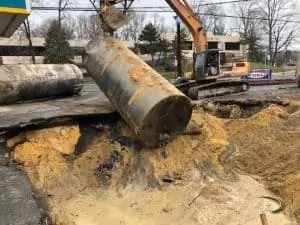
The claim is accepted; undoubtedly good news for the client. What happens now is that the claim becomes “Active,” requiring among other things for the claims analyst to set reserves. A reserve is an estimate of what the claim is going to cost the insurance company. Your insurance support consultant can provide a rough approximation of the estimated costs to achieve regulatory closure, which includes all expenses incurred from investigation through remediation, post-remediation monitoring and reporting.
Early in the life of a claim, these are preliminary estimates that are refined as a project progresses, often requiring the claims analyst to adjust their reserves; important to the insurance company as future reserves impact financial forecasts. Insurance support services will develop the cost-to-closure estimate based on all available information and data, as well as their professional experience on similar projects. The insurer wants the most experienced environmental consultants and engineers on the case because their estimates are more likely to be on target and identify potential regulatory issues or risks.
From the insurer’s standpoint, the primary goal is to maintain a high level of responsiveness to their clients and process requests for reimbursement against the claim. The role of your insurance support team can continue by managing quality control and evaluation of site-specific activities; ensuring that the investigation and cleanup are reasonable and appropriate given the environmental conditions at the site, all applicable regulatory requirements, and costs consistent with industry standards for recovery. The client and their environmental consultant are required to provide the insurer and the insurance support consultant documentation of the work as follows:
Over the life of a claim, insurance support may correspond with the project consultant on behalf of the insurer, conduct site visits, and be asked to participate in meetings, conference calls, and mediations. The overall goal of your insurance support consultant is to assist claims analysts in closing a claim in the most time-efficient, cost-effective manner possible within all regulatory rules and guidelines.
Once an active claim−environmental project has achieved regulatory closure, the claims analyst begins the administrative process of closing the claim. From SCS’s insurance support standpoint, all that remains is to obtain the appropriate documentation from the regulator confirming that the subject project is approved for closure and that no further actions are required.
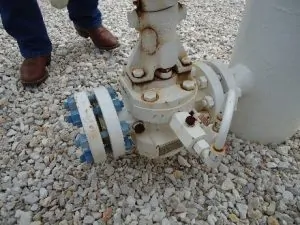
There are other circumstances which may result in closing a claim, such as exceeding the maximum total cost that can be paid out by the policy, non-compliance with policy requirements, or new information coming to light which results in a change in coverage position by the insurer. In some cases, such as when there is a change in coverage position or the cause of the issue can be attributed to a third party equipment failure, the insurer may seek to recover costs expended from the client and third-party policies. That process, called subrogation, may require the expertise of your insurance support specialist and at times their testimony as an expert witness.
There are several ways that SCS helps our insurance clients and other clients. The involvement of insurance companies is becoming more pervasive throughout environmental consulting and engineering in all business sectors. The combination of SCS’s industry expertise, contacts associated with our insurance support services, and our Federal, State, and local level regulatory expertise brings more knowledge and efficiency to each project. SCS offers a wide range of engineering and environmental services, a national presence, and a positive established industry reputation.
Our clients appreciate being able to draw upon our insurance-related expertise to assist them with their submittals, interpreting insurance requirements, and liaising with insurance companies as part of our core capabilities.
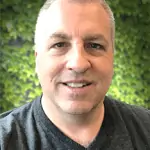
Mr. Michael Schmidt is an accomplished industry leader with nearly 30 years of progressively responsible experience in the environmental consulting and environmental insurance industries. He has specific expertise focusing on the evaluation of environmental risks and liabilities associated with insurance claims and underwriting, site investigation and remediation, due diligence, and project management.
Feel free to use our website to share our blogs, whitepapers, case studies, events, and news. SCS respects your privacy.